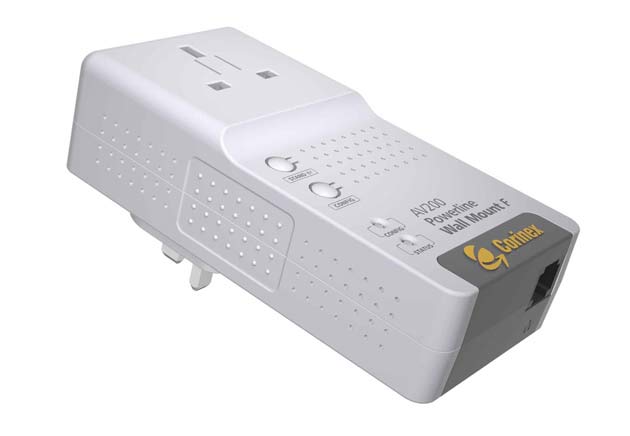Broadband's Powerful Future

Previously, if you wanted a broadband internet connection, you either plugged your computer into a DSL modem from your phone company or into cable modem from your cable TV network. But in the future it’s increasingly likely that you’ll plug your computer into the receptacle it’s already using: the power outlet.
That’s right—since a wire already runs into your house to carry power, why not use it to carry data as well? That is what increasing numbers of people are doing, using a technology called broadband over powerline (BPL).
Using transmission protocols designed to co-exist with power on the line, the signal is injected into the distribution wire that runs into a neighborhood. At the transformer where the line connects to a subscriber, the signal is routed around the transformer and onto the feeder line leading to the house. (Passing through the transformer would erase the signal.)
Inside the house, the user plugs an adapter [image] into any power outlet, and then plugs an Ethernet cable into the adapter—and has an internet connection.
Growth expected
While a little more than 100,000 people in the United States use BPL today, that figure should grow to 2.5 million by 2011, predicts Chris Roden, analyst at Parks Associates in Dallas.
“It all comes down to the gap between rural and densely settled areas,” Roden told LiveScience. DSL and cable are hard to get in lightly settled areas, where building networks is expensive, he explained, forcing the residents there to get by with dial-up connections. However, all but the most remote rural residents are already served by a powerline.
Sign up for the Live Science daily newsletter now
Get the world’s most fascinating discoveries delivered straight to your inbox.
Meanwhile, technical problems involving interference, line noise, and signal range were all solved within the last three years.
“Previously we were not quite there with the technology in terms of speeds and chip sets, but now we are,” explained Ralph Vogel, spokesman for Utility.net, a Los Angeles-based BPL installation firm.
City use too
Despite BPL’s advantages in rural areas, the biggest planned BPL installations are in urban areas (specifically, Dallas and Houston.) In urban settings, the rationale for BPL is to create “smart grids” to monitor and control the power network.
“Today, utilities have to wait for someone to call in to say their lights are out, and then send out a truck to find the problem,” Roden explained.
Meanwhile, giving each subscriber a digital meter that can transmit real-time readings via BPL would not only end the need for meter readers, it would allow time-of-day pricing, with premium pricing during times of peak demand.
With BPL installed throughout the network, offering retail internet access (probably through third-party internet service providers) would be the logical next move, and plans to do so have been announced in Dallas.
“It’s icing on the cake,” said Mike Arden, principal analyst at ABI Research in Oyster Bay, NY.
- Cordless Phones Finally Work
- Video: Make Your Own Ethernet Cable
- New Super-Size TVs: Action Larger than Life
- It's on the Web; It Must Be True









